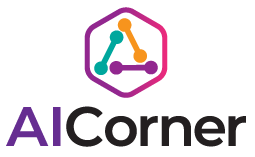In the FAST-CHANGING world of technology, two technologies that have arisen to disrupt forces are AI and Blockchain. While both have made great strides on their own, when they collide the frontier is an exciting one that can change multiple industries forever. In this post, I am writing about AI and blockchain together. The combination of both technologies provides a significant level of security while enabling belief ability in the digital system as well.
Understanding the Foundations
At this juncture, we should know exactly what AI is and the same continues for blockchain also because there are some key principles to these two concepts.
Artificial Intelligence (AI)
Artificial Intelligence (AI) is the simulation of human intelligence in machines that are designed to think and mimic just like humans. It includes machine learning, NLP computer vision, and other subfields that help systems perform activities that require human intelligence.
Blockchain
A blockchain is a digitized, decentralized, and distributed ledger or record of transactions that are captured by multiple parties across different computers. It is an immutable, transparent, and highly secure solution that will be beneficial across a plethora of application spaces beyond cryptocurrencies.
The Synergy of AI and Blockchain
The best news is that both AI and blockchain have their day when they meet in the middle of this Venn diagram — where limitation becomes bygone and strength magnified. How This Intersection Improves Security, Trust…
1. Enhanced Data Integrity and Security
The immutableness of blockchain makes it a secure platform as anything done on the free will be recorded and cannot be changed at any point in time, this provides basic ground for operations to apply their AI systems. Ways in which we can: Have AI models and data stored on blockchain?
Immutable data: Data, once recorded in a blockchain cannot be altered unless there is universal consensus on the changes.
Immutable, auditable trails of everything that happens with the AI model: every decision and update can be logged on-chain to verify its entire history.
This combination greatly enhances the reliability of AI systems — especially in applications where errors can be extremely costly, such as healthcare diagnostics or financial fraud detection.
2. Decentralized AI
Historically AI systems have leveraged centralized data storage which makes the whole system fragile to single points of failure and/or breach. Blockchain helps you to form decentralized AI networks where;
Decentralized data and models: Minimizes risk of loss or unauthorized use of one entity`s information.
Computation is social: Utilizing the collective network to benefit a stronger more highly available AI processor.
This not only enhances security, it democratizes AI capabilities more widely distributed to further advances in innovation and cuts monopoly control over AI technologies.
3. Smart Contracts and AI
AI in smart contracts — Smart contracts are self-executing contracts with the terms of the agreement between buyers and sellers being directly written into code.
Smarter decision-making: AI can process any type of new complex condition and market data, effectuating far more profitable smart contract executions.
Smart contracts adapt: because AI can identify patterns in new data, it enables smart contracts to evolve – they’re not stuck being the same forever.
This integration builds more complex, reliable autonomous systems for many applications from supply chain management to decentralized finance (DeFi).
4. Improved Privacy in AI
AI has lagged for a few reasons, notably because of privacy issues related to the handling of personal data. This is where blockchain technologies come into play — e.g. zero-knowledge proofs:
Secure computations: Perform AI calculations on encrypted data without showing the sensitive information behind it.
Centralized data sharing – while keeping ownership/title to your data on the blockchain, you can control limited access for AI processing.
This method allows for the training of AI to be done on a large dataset without releasing personal data. Ideal workaround as such.
5. Enhanced Cybersecurity
Algorithm-driven cybersecurity On combining AI with Blockchain’s four walls you have the perfect cyber safeguard solution.
Anomaly Detection: By examining the blockchain transactions on the fly, AI helps to identify those odd ones out — any suspicious patterns or what seems like a security threat.
Adaptive security protocols — The way blockchain can be used to securely house and update AI-driven security models, giving companies up-to-the-minute defenses for changing threats.
It’s a mutualistidefensece system that protects against cyber attacks, ever more important in the changing world of new digital threats.
Challenges and Future Outlook
Although the marriage of AI and blockchain holds immense promise, it does not come without its own set of bottlenecks:
Scalability — AI and blockchain both have scalability issues, machine learning is still in its quests to reap minds of real value which makes it hard for data-rich but label-poor companies.
Regulatory challenges- The rapid advancement of such technologies is often faster than the current regulatory regimes and there are issues related to legality.
Demand for skilled professionals: AI and blockchain experts are fairly limited right now which results in difficulty finding people with the technical skills required to design systems coupling both.
The future seems bright despite these hurdles Expect to see as the early technologies continue to mature:
Stronger consensus mechanisms that can handle AI computations
Common Integrations AI-blockchain protocols
Cutting-edge advances in topics including autonomous systems, IoT, and personal medicine applications
Conclusion
The intersection of AI and BlockchainThe intersection of Artificial Intelligence with Blockchain technology is a new frontier for innovation that is capable of reshaping the fabric of the modern-day digital world. This convergence bodes well for the future of stronger, transparent, and smarter systems as it adds a layer of security that increases trust across these blockchain networks. As research and development in this space are advancing at an incredible rate, we’re about to enter a new era where the coupling of AI with blockchain could provide some amazing solutions for many complex technological requirements that may bring unmatched levels of security and trust in our highly digital world.

